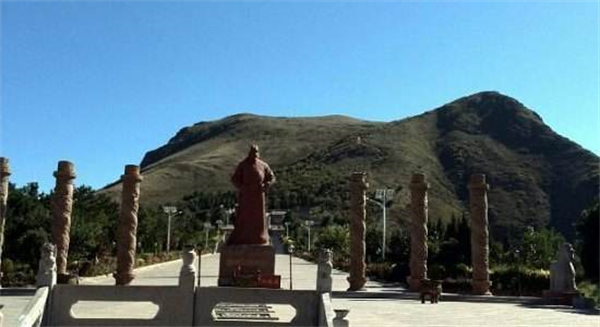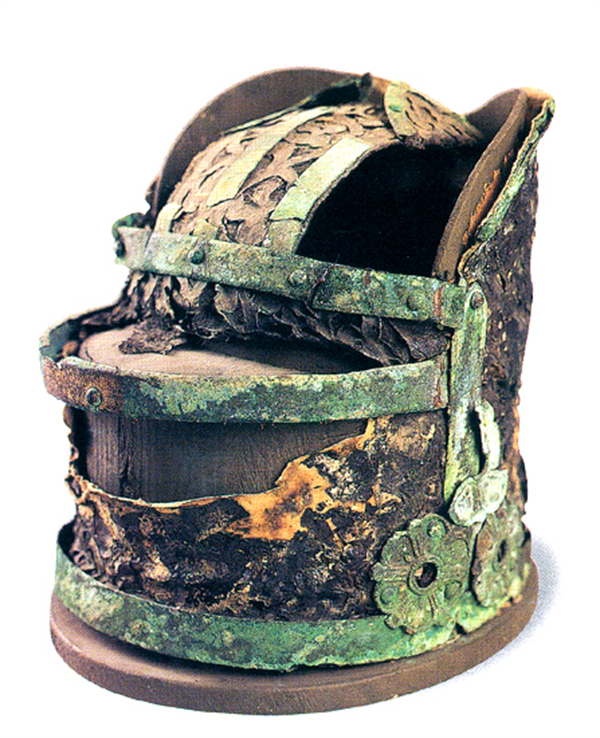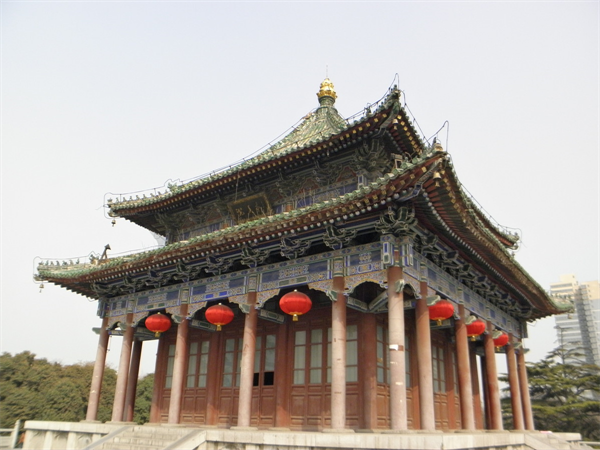Reign of Zhenguan Period During the Tang Dynasty
Emperor Taizong, namely Li Shimin—the second emperor of the Tang Dynasty, was in power for 23 years from 627AD to 649AD. During this period, government learned lessons from the fall of the Sui Dynasty and started reforms in fields like politics, economy and culture. Consequently, the scene of well-developed economy, stable society, clean government and affluent life of the Tang People emerged. The governing period of Emperor Taizong was called “the Reign of Zhenguan”. Although quite short and not the most prosperous period in the Tang Dynasty either, “the Reign of Zhenguan” was of great significance in history because it was in this period that the most civilized political environment and the most harmonious relationship between the Majesty and his subjects was established. It laid a solid foundation for the 300-year history of the Tang Dynasty. And it also set a good example for China after the Tang Dynasty.
In the long course of Chinese feudal history, all the dynasties which were founded after war carried out non-interference policy to help people restore the economy. These policies turned out not only extremely successful in the early stages of the Han and the Tang dynasties, but also led to “the Reign of Wendi and Jingdi” and “the Reign of Zhenguan”, two model eras of peace and prosperity. Thanks to the rulers of both dynasties who could objectively reflect on the mistakes of the former dynasties and put actual efforts into revitalizing the bleak society and weak economy left behind by war. The conflicts and contradictions between the farmers and the rulers of the Han and the Tang dynasties were much less than in other Chinese dynasties in ancient time. Meanwhile, the two model eras of peace and prosperity are amazingly similar: in both dynasties, the emperors advocated austerity and self-discipline with great efforts; the governments lessened corvee and taxation on the farmers; the politics was clean and the criminal laws were lenient; farmers had good harvests, people were rich and honest. In fact, the above-mentioned features were set as the standard to judge whether a dynasty in ancient China was a peaceful and prosperous dynasty. This standard was taken as a good example for the emperors of other dynasties to follow.
Of course, “the Reign of Zhenguan” had its own defining features that contributed to its prosperity. The features are unprecedented unity in politics; the brilliant use of talents and the openness to proposals. With these features, it was possible to carry out the political, economic and cultural measures and to make Emperor Taizong one of the greatest emperors in ancient Chinese history.

Zhaoling Mausoleum of Emperor Taizong of the Tang Dynasty
Emperor Taizong paid great attention on the selection of talents, especially the integrity and ability of the talents. He believed that the “Order” could be ensured when he owned a large number of talents. He was so eager for talents that he put up imperial edicts five times, increased the tested subjects in the imperial exams, and even expanded the range of examinees just for the purpose of finding more talents. Because of the preferential policies, many talents with good education and military strategies emerged under the reign of Emperor Taizong. With their wisdom, these talents made great contributions to “the Reign of Zhenguan” and pushed China’s ancient political civilization to its peak.
In order to give high honor to his officials and generals who made great contributions, Emperor Taizong had the Lingyan Pavilion built in his palace and invited the renowned artist Yan Liben to draw the paintings of the twenty-four officials and generals in their honor in it. Meanwhile, Emperor Taizong had the names of all officials in charge of different provinces written on pillars, together with their achievements and wrong-doings. And he gave out awards and punishments according to the record. Emperor Taizong could still remember the helpful talented people till the day when he was going to die. Li Shimin’s tomb is Zhaoling Mausoleum with over 200 satellite tombs around it. These are the tombs of royal family members, the awarded officials and generals. Their relationships with Emperor Taizong and their contributions decided the location of their tombs. The tombs of those people who had close relationships with the emperor or they made great contributions to the empire were arranged near the mausoleum of the emperor. And so on. All the tombs were placed in the shape of a traditional Chinese fan, forming “a myriad of stars surrounding the moon”. People buried in the tombs around the mausoleum of Emperor Taizong were the most elite of the Tang Dynasty. It is unprecedented that an emperor of the Tang Dynasty had so many great talents buried with him. It is the only case in China and the world. The arrangement of those tombs is a symbol of unity in the early stage of the Tang Dynasty. It is also an embodiment of “the Reign of Zhenguan” of the Tang Dynasty. It reflects the prosperity of the Tang Dynasty in the form of tomb arrangement.

Jinde Hat, the oldest official hat found so far in China
The powerful and prosperous dynasties in Chinese history featured with enormous wealth, strong military force, abundant food and commodities. But in terms of political system and cultural legacy, the great accomplishment was only made in the “Zhenguan Period” of the Tang Dynasty. Here are some examples to prove the view: the improvement of the system of the Three Departments and Six Ministries; the revision of the laws of the Tang Dynasty and the offi cial establishment of the imperial exams.
China’s political system in the feudal history was represented by high power centralization which severely restricted the people’s creativity, initiative as well as flexibility and might lead to tyranny. The Tang Dynasty inherited the system of the “Three Departments and Six Ministries” of the Sui Dynasty, but the power separation of the three departments (Zhongshu Sheng, Menxia Sheng and Shangshu Sheng) showed the modern political features in the Zhenguan Period. Zhongshu Sheng (the secretariat) enacted the decrees; Menxia Sheng (the supervisory department) reviewed the decrees and Shangshu Sheng (the state council) executed the decrees. To enact a government decree, the chancellors would have to hold meetings in the Office of Chancellors under the Secretariat and submit the results of their discussion to the emperor for approval, then a decree could be issued by the Secretariat in the emperor’s name. But before issuing, the decree would be sent to the supervisory department for review, and the supervisory department had the right to reject to “countersign” if it believed the decree improper. A decree could only be issued and became law with the “countersignature”. And then the decree would be submitted to the State Council for implementation (Wei Zheng, a very loyal chancellor once served in the supervisory department). This political operational system is quite similar to the “the three party” political system in modern democratic countries. Emperor Taizong employed this system in China one thousand years earlier than the Western world. It proves what a high level “the Reign of Zhenguan” had achieved. What’s more precious about Li Shimin is that he allowed his own edicts to be “countersigned” by the Supervisory Department to prevent him from making irrational decisions when he was in extreme emotions. Among so many emperors in Chinese history, Li Shimin is the only one who had such wisdom and spiritual realm.

Xingqing Imperial Palace, a famous royal palace in Chang’an City of the Tang Dynasty
Based on the solid foundation laid in “the Reign of Zhenguan”, the Tang Dynasty finally entered into its prime during Emperor Xuanzong’s reign under the unremitting efforts made by Emperor Gaozong and Emperess Wu Zetian. As the same as “the Reign of Zhenguan”, “the Prosperity of Kaiyuan Period” is the result of Emperor Xuanzong’s constant progress in reforms, policies of selecting talents. A man as proud of his ability and talents as the poet Li Bai who did not “bow and scrape to the nobles” could be summoned by Emperor Xuanzong to be the member of the Imperial Academy; one can imagine how open the cultural policies were in the court and how attractive the policies were to the intellectuals. The cultural and artistic booms thereafter were naturally no surprise. In terms of the official system, Emperor Xuanzong put forward the principle of “strict official promotion” and paid special attention to the selection of the county magistrates. He would sometimes test the magistrates by himself to see if the candidates had administration skills and strategies. Emperor Xuanzong usually summoned the newly-appointed officials before they went on duty. It was a positive political attitude for the emperor concerning about people’s life. The county magistrates would demonstrate their gratitude and loyalty by seriously implement the policies of the emperor after they were interviewed by the emperor himself. These historical records display Emperor Xuanzong’s superb political skills in managing the state affairs in the early stage of his reign. The great scene of the prosperity of the Tang Dynasty was vividly depicted in a poem entitled Remembering the Past by Du Fu, a prominent Chinese poet of the Tang Dynasty: I remember the good old Kaiyuan days / When even a small county had ten thousand households / The rice shone and the millet was light yellow / And granaries of state and people burst with grain alike / Peace filled all the land / Where good time for travel was easily found / Rolling carts brimmed with white silk from Qi and Lu / The laboring men and feeding women were so cheerful at their work. The booming scene in “the Prosperity of Kaiyuan Period” has been engraved into the mind of the Chinese people for a very long time. For the people after the fall of the Tang Dynasty, the Tang Dynasty was always a happy and memorable time for them to cherish. In their eyes and hearts, the achievement made in the Tang Dynasty could never be reached and reproduced by them as well as their rulers. To those people after the Tang Dynasty, the Tang Dynasty was like a dream and they always felt proud of it whenever the dynasty came across their minds.


